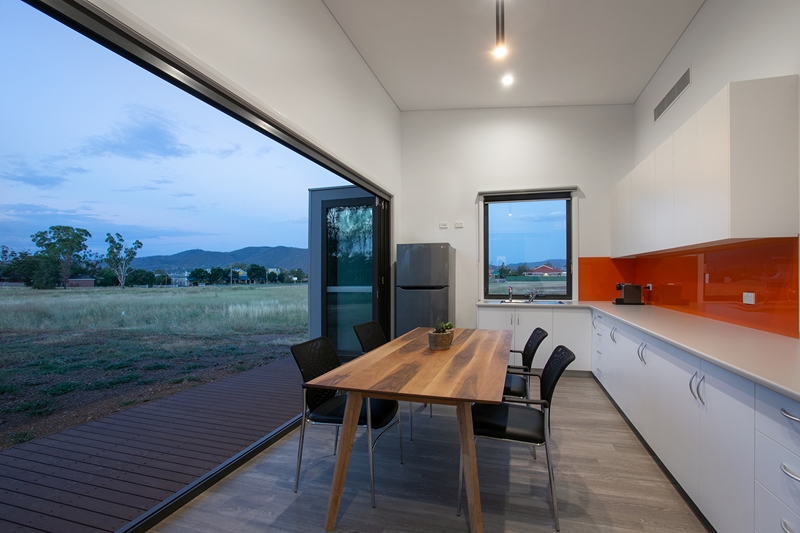Medical facility design is constantly evolving. Anything from trends in fashion to new technological developments change the way professionals design, use and find comfort in medical facilities – and it’s important that anyone looking at their own clinic understands what’s ahead.
On top of this, IBISWorld’s reporting on Australian health services shows that in the coming years, patient numbers are going to rise dramatically as the population ages. Despite Master Builders forecasting a drop in health construction, there is plenty of scope for innovative design to meet increasing Australian demand for services. These five trends make a great starting point for embracing that growth.
1) Closed-office architecture for productivity
A 2018 study from the Royal Society indicates that open-office architecture may not be conducive to productive face-to-face interaction. Since every staff member is visible to the others and we have a natural inclination towards privacy, there is a strong onus to look as busy as possible, which drives people to isolate themselves with headphones and ostentatiously fussy activity.
Essentially, open-office spaces induce individualism rather than collaboration (the initial intended impact). This is an important consideration for medical facility design in Australia, especially clinics with multiple practitioners in close proximity. Depending on staffs needs, you may need to rethink how your space is laid out.
2) The Ultra Violet trend
Pantone’s colour of the year always has a big impact on commercial design. In 2018, the winning shade was Ultra Violet 18-3838. Equal parts meditative and creative, this colour will feature in medical facility design over the next few years.
As a strong hue, it should perhaps not dominate your medical facility – but is well worth including in your plans.
The Color of the Year 2018 is…PANTONE 18-3838 Ultra Violet!https://t.co/ciwdTYqoIC
— PANTONE (@pantone) December 7, 2017
3) Voice-driven design
Research from OC&C Consultants suggests that by 2022, 55 per cent of homes will use voice-activated smart speakers – a change that could be reflected in modern medical facility design.
Amazon Echo, Google Home and the Apple HomePod already have major market penetration, replacing traditional services with simple voice commands. At some point, this will undoubtedly influence the way we design clinics. When voice control can influence temperature, locks, doors and more, we can rethink the way a traditional office is built.
 What trends in medical facility design do you need to pay attention to?
What trends in medical facility design do you need to pay attention to?4) Infrastructure for dislocation
Technology has enabled medical professionals to work remotely, consulting with and diagnosing patients without ever meeting them in person. The rise of 5G internet (not to mention SpaceX’s plans for global wireless) will soon enable this kind of interaction from anywhere on the planet.
While not an architectural trend per se, it will reshape medical facility design to a huge degree. When consultation rooms become a patient’s own home, how else can you use this space? In extreme cases, medical facility design may need to completely refocus around video calling and private long-range communication spaces.
 How will you utilise space in medical facility design?
How will you utilise space in medical facility design?5) Automation in transport
Self-driving vehicles and the sharing economy have revolutionised transport in Australia, and subsequently changed medical facility design. Where patients once had to find parking and clinics had to provide it, we now careen towards a system in which vehicles (either taxis or autonomous) do not require this kind of space.
This has a massive impact on medical facility planning in Australia. Clinics that do not have on-street parking nearby may soon not have to worry about providing this space at all, which can have a drastic reduction on the space required to build or organise a fitout.
Spaces are changing – is your organisation?
A key theme running through all of these trends is reduction. Reduction in time, in space and in structural requirements. The medical facility of the future will still have a critical role to play in Australia, but that role will be different to what patients have experienced in the last few years.
To see your vision for a medical facility come to life, no matter which trends you adopt, get in touch with the team at Space for Health.



